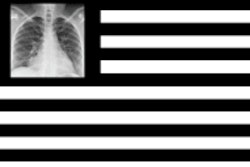
What does "repeat imaging" mean? While wasteful duplicate exams might be your first thought, some repeat imaging exams might actually be medically necessary, according to a new report from the American College of Radiology's (ACR) Harvey L. Neiman Health Policy Institute that tries to clarify the concept.
In a February 19 report, Neiman institute researchers discussed examples of repeat imaging scenarios that could indicate medically necessary exams, and others that could indicate waste. To help guide policymakers and clinicians, the institute has developed a new classification system to clarify its definition.
The Neiman Institute conducts research regarding medical imaging use, quality, and safety metrics as part of its mission to provide a basis for the development of evidence-based medical imaging policy. Titled "Repeat Medical Imaging: A Classification System for Meaningful Policy Analysis and Research," its new report provides guidelines with examples that explain when repeated imaging exams are appropriate.
The classification system evolved from the concern that some health researchers, policymakers, regulators, and payors have used the term "repeat imaging" as a catch-all phrase. But the term conflates wasteful duplicate imaging of a diagnostic exam that does not need to be repeated with appropriate and necessary supplementary imaging and recommended follow-up procedures.
 Dr. Richard Duszak Jr.
Dr. Richard Duszak Jr.As a result, some repeat imaging that is actually medically necessary may be miscategorized as wasteful spending, according to the institute.
Dr. Richard Duszak Jr., a practicing radiologist and the institute's CEO, used the example of a recent article published in JAMA Internal Medicine about the rate of repeat testing of Medicare patients (Welch et al, December 10, 2012, Vol. 172:22, pp. 1745-1751). The study failed to consider medical necessity for any of the patients whose data had been analyzed.
"Various experts suggest that billions of dollars are spent annually on repeat testing," he said in a February 19 press conference announcing the report. "Unfortunately, the whole topic of repeat testing is addressed with broad brush strokes at a population level, and even more fundamentally, without a clear and accurate understanding of what exactly is encompassed by the phrase."
The new report seeks to replace ambiguous terminology with an effective classification system that can help all stakeholders develop sound, clinically meaningful imaging utilization and payment policies, Duszak continued.
"Although this brief is directed toward health services researchers and policymakers, it is our hope that anyone who reads it will have a better understanding of what 'repeat imaging' means in the real world experienced by physicians and their patients," Duszak said.
The report provides clinical scenarios that illustrate when follow-up imaging and supplemental imaging are diagnostically appropriate. One example was a patient who received similar but unrelated imaging exams: The patient had a CT scan to stage cancer treatment, and a day later needed an "identical" CT scan as a result of injuries incurred in an automobile accident.
Administrative data alone, such as ICD-9 coding, may be appropriate when used by physicians with clinical experience in a specific domain. But many situations exist when actual clinical data will be required for rigorous analysis, he explained.
The adoption of electronic health records (EHRs) by healthcare providers in the U.S. and the increasing sophistication of data mining using natural language processing and business analytics software may also help clarify when repeat imaging is clinically necessary. Electronic records offer the potential to identify clinical nuances.
But even so, standardization is needed. The report therefore includes category codes that researchers can use to differentiate 13 types of repeat exams.
"Without precision and uniformity, further investigation could result in healthcare policy which could unintentionally impede the quality of individual patient care and overall societal health," Duszak concluded.



















